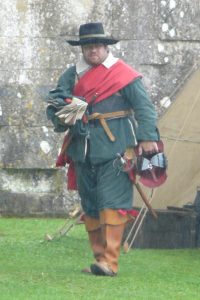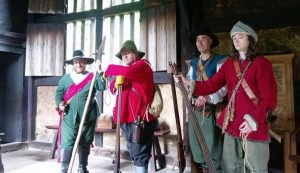 Typically officers gained their rank through social status rather than military ability. Prior to the English Civil War the vast majority of the population had lived in peace for a prolonged period of time. Members of the gentry would have been involved with mustering and leading the county trained bands and militias. This involved the stock piling of arms and mustering the male population to train in the use of weapons for the defence of the county.
Typically officers gained their rank through social status rather than military ability. Prior to the English Civil War the vast majority of the population had lived in peace for a prolonged period of time. Members of the gentry would have been involved with mustering and leading the county trained bands and militias. This involved the stock piling of arms and mustering the male population to train in the use of weapons for the defence of the county.
However there were some professional officers on both sides. These men learnt their trade on the continent during the Thirty Years War. A number of commanders served in the Thirty Years War including Sir Ralph Hopton, Sir William Waller and the Earl of Essex.
Beyond the trained bands and militias, regiments were also raised by the gentry at their own cost. In many cases these would have included tenants and workers from their estates. This would include equipping the men with all necessary arms, armour and accoutrements. Often the commander would also provide a coat of a standardised colour.
The officers themselves tended to wear their civilian clothing, as there were no formal uniforms as such. However it would be possible to distinguish an officer by badges of rank. These include scarves or sashes, which a lengths of silk worn either across the shoulder or around the waist. The Royalists tended to wear red or blue sashes, whilst the Parliamentarians favoured orange/tawny or yellow. Officers would also wear a gorget, a form of armour worn around the neck.
